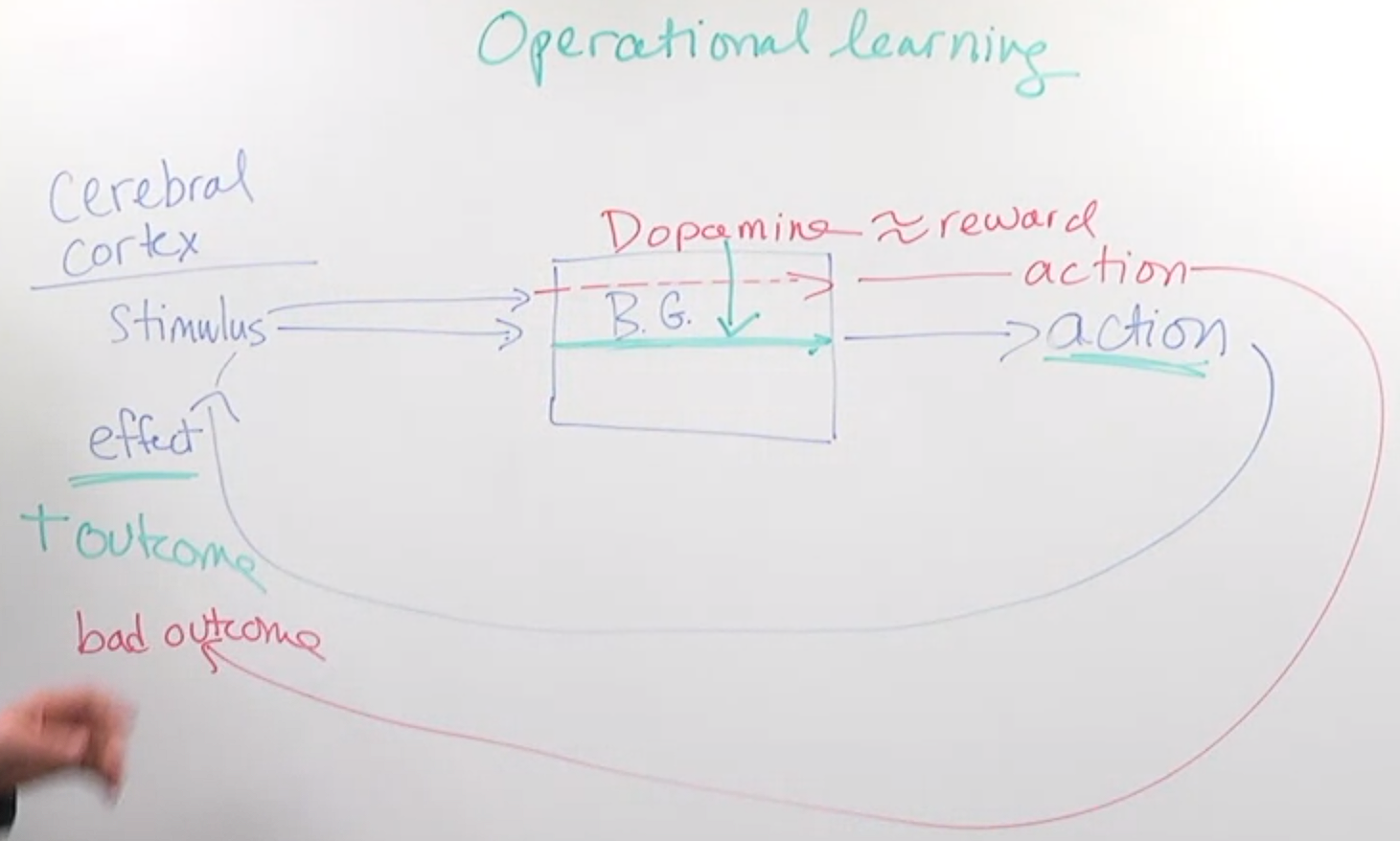
The Role of the Basal Ganglia in Learning
- The basal ganglia is a learning machine that learns from the outcomes of its actions.
- Operational Learning: The process of learning from the consequences of actions.
- Positive Outcomes: Actions leading to positive outcomes are reinforced and strengthened.
- Negative Outcomes: Actions leading to negative outcomes are weakened and less likely to be repeated.
Dopamine and Craving
- Dopamine: A neurotransmitter crucial for learning and reinforcement.
- Contrary to popular belief, dopamine is not directly linked to reward, but rather to craving.
- Craving is evolutionarily advantageous as it drives individuals to seek out necessary resources like food and water.
- Dopamine facilitates connections between stimuli and actions that lead to positive outcomes, creating a desire to repeat those actions.
The Importance of Timing
- The time delay between an action and its outcome significantly impacts learning.
- Short Delays: Actions followed by immediate positive outcomes are more likely to be reinforced and craved.
- Long Delays: Delayed outcomes are less effective in driving learning and behavior change.
- Modern technology, such as video games and social media, capitalizes on this by providing instant feedback and gratification.
Summary
- The basal ganglia learns by associating actions with their outcomes.
- Dopamine plays a crucial role in reinforcing desired behaviors through craving.
- The timing of feedback is essential for effective learning.
- Understanding these principles can help explain human behavior and the impact of technology on learning and motivation.
